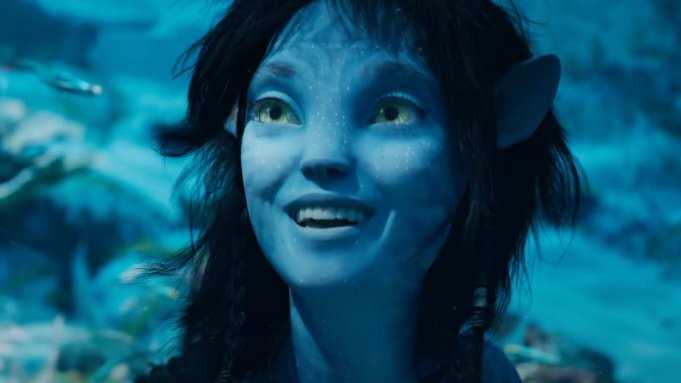#ConvergeMovieReviews - Avatar: The Way of Water
Acacia's Movie Scale
Visuals: 5/5
Entertainment: 2/5
Commentary: 1.5/5
Story: 2/5
By Acacia Salisbury
We return to the fictional planet Pandora and the Na'vi in the second installment in the Avatar franchise; Avatar: The Way of Water. The film has thus far grossed 1.5 billion globally, and Canadian filmmaker James Cameron has already announced three more films after this one. While much can be said about the film, there is no denying it is visually stunning. Russell Carpenter's cinematography combined with the visual effect work of Weta Studio is so incredible that, at times, you can forget the film's most overt and problematic aspects.
While it might be easy to detach the Na'vi from real people as they're blue and well over 10 feet tall, the culture and practices we see in the film came from real cultures and traditions. To take from real people's culture, physical features, and stories while utilizing only one indigenous actor is a form of erasure. This film clearly draws on the Māori (indigenous Polynesian people of New Zealand) culture and traditions. Cliff Curtis, who is of Māori descent, plays the Tonowari Chief of the Metkayina. Still, the other characters who are a part of the Metkayina and the main characters are played by non-indigenous actors. To base a fictional culture so heavily on an actual culture and incorporate their traditions while having so many characters played by white people is a form of appropriation and erasure.
There is also the issue of how whiteness appears in the film and the prevalent idea that people can "go native," which is affirmed throughout the film with specific plot choices. This premise is already set in the first film when Jack Sully (played by Sam Worthington) is centered as the film's savior. This continues throughout the second film, where Jack is now a leader and the center of much of the decision-making. This is taken a step further when in this film, the aggressors from the first film are brought back to life in the bodies of the Na'vi. Even when it is time to confront said aggressors at the end of the film, Sully is the leader and voice of reason. The commitment to centering Sully as the story's hero is one of the film's most prominent examples of the white savior complex. We also have the storyline of Spider, a white child with dreadlocks who is left behind after the humans leave in the first film. Spider's loyalties are conflicted, and he, in many ways, betrays the trust of the Na'vi throughout the film. In many ways, the film is less about the Na'vi and more about the white people interacting with and wearing their bodies.
While it is clear that Avatar: Ways of Water has a message of anti-colonization, it, in many ways, still centers on whiteness. It is not enough that Avatar has some anti-colonial themes when the film, in many ways, reaffirms myths about indigenous cultures. We must stop and ask ourselves who is telling this story and what we are led to believe. When art is made with little thought of the subject of said art, it is, in a way, its own form of erasure and active colonization. When fantasy and science fiction offers us so much possibility, Avatar: Way of Water is beautiful smoke and mirrors that thinly veils the whiteness at its center. If you want to watch sci-fi films by actual Indigenous people, check out this excellent thread by Dr. Autumn Asher BlackDeer.







